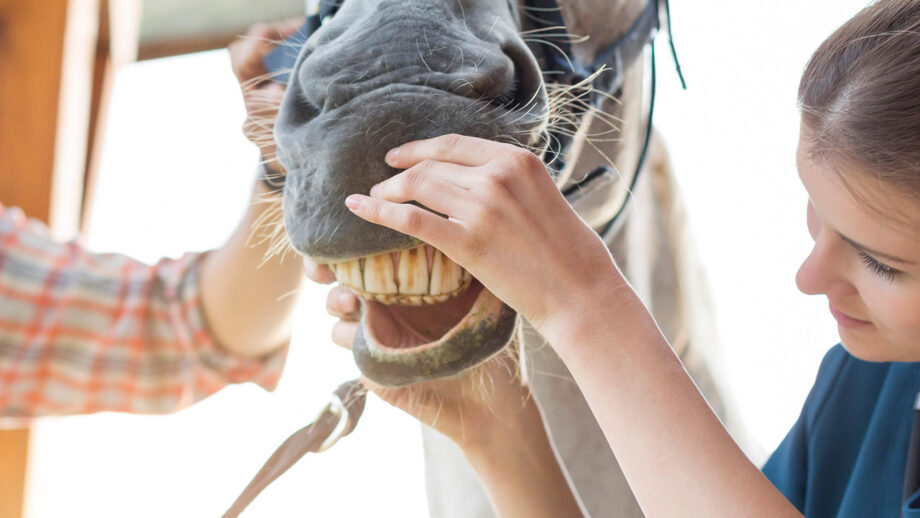Q: In the last week my two-and-a-half-year-old Thoroughbred mare, who I have owned for three months, has lost two front teeth. How long will it take for the permanent teeth to grow through? Will she lose all her teeth, including the molars?
Jo Holmes MRCVS replies: Your horse’s teeth are developing right on schedule. Incisor, premolar and molar milk teeth are all shed sequentially, most having developed in the foal by two months of age.
The horse possesses six upper and six lower incisors at the front of the mouth. The middle two in each jaw are known as the centrals, those flanking them are the laterals and the outer incisors are those on each corner.
The permanent centrals erupt at two-and-a-half years of age and grow down to come into wear by the time the horse is three. The laterals will erupt at three-and-a-half years, to be in wear by four years and the corners will erupt by four-and-a-half years to be in wear by the age of five.
The first permanent premolars, commonly known as wolf teeth, develop at six months of age and are not often shed unless removed by the vet. The second, third and fourth premolars erupt at two-and-a-half, three and four years respectively – virtually synchronised with the incisors.
Molar eruption is less systematic. The first permanent molar appears at one year, the second at two years and the third at approximately four years of age. Permanent premolars and molars grow down into the mouth continuously throughout the life of the horse, as they are gradually worn down.
They leave behind large bony cavities in the jaw and skull as they grow, which become known as sinuses and are filled only with air.
Your mare’s mouth should currently contain a mix of milk and permanent teeth. Conformational defects such as parrot mouth and vices such as crib biting can affect the wear of the teeth and cause them to be shed sooner than necessary.
Because tooth eruption follows such a strict timetable, it is possible to age most horses up to five years of age to within six months of accuracy. Beyond this point, wear can vary hugely between horses, which is why vets may be cautious when asked to age an older horse.



